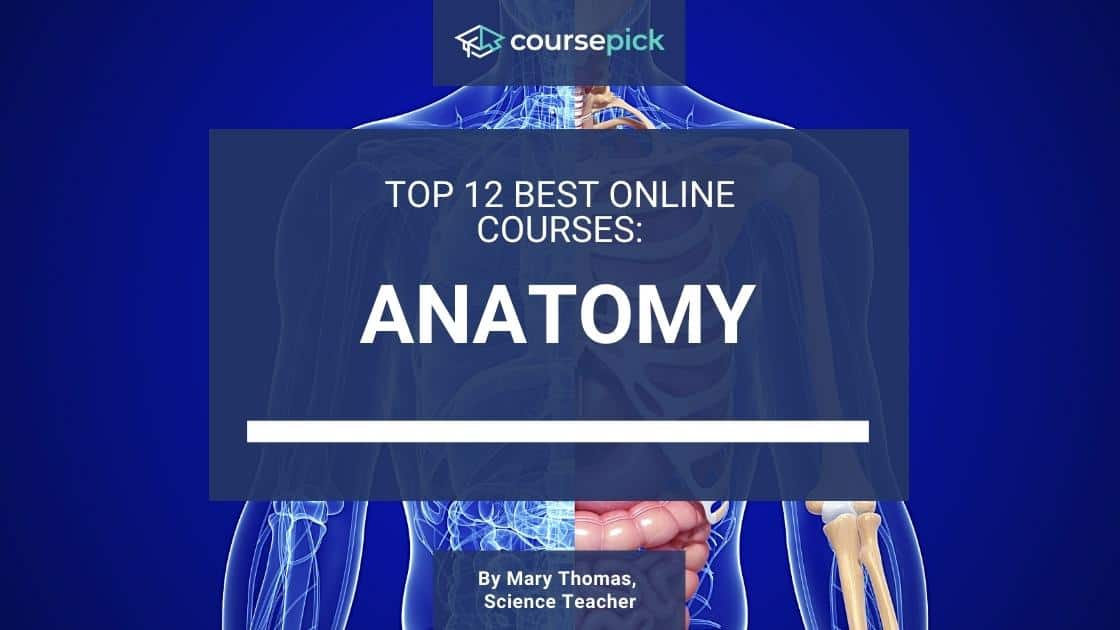
Anatomy courses are practical for individuals planning to pursue careers in medicine, biology, nursing, and other related fields.
If you’re looking for an informative and reputable online anatomy course, I’ve narrowed it down to the top 12.
Each course is unique, with some focusing on introductory lessons, and others being more specialized.
1. Easy Anatomy and Physiology (Platinum Edition) by Bruce Forciea

Udemy offers this introductory course to anatomy taught by Dr. Bruce Forciea, a college instructor in anatomy and physiology. He is also known for writing books related to the subject.
As a precursor lesson, these are the learning expectations:
- Human anatomical structures
- Human body system physiology
- Anatomical terms
While the expectations may seem too basic, the course’s scope is broad, and tackles topics such as cells, body systems, and more.
These topics comprise the foundation of almost every anatomy lesson. Learning these concepts would allow you to establish your way through the subject.
Although there seems to be a lot of ground to cover, Dr. Forciea is known to break down complex ideas into simpler terms, making it easier to digest the subject matter.
Thus, the target audience of these lessons is first year health students and even high schoolers.
This is best suited for you if you are about to begin anatomy because it’s simple but foundational.
2. Anatomy Basics – Intro to Studying Human Anatomy by Kenhub GmbH
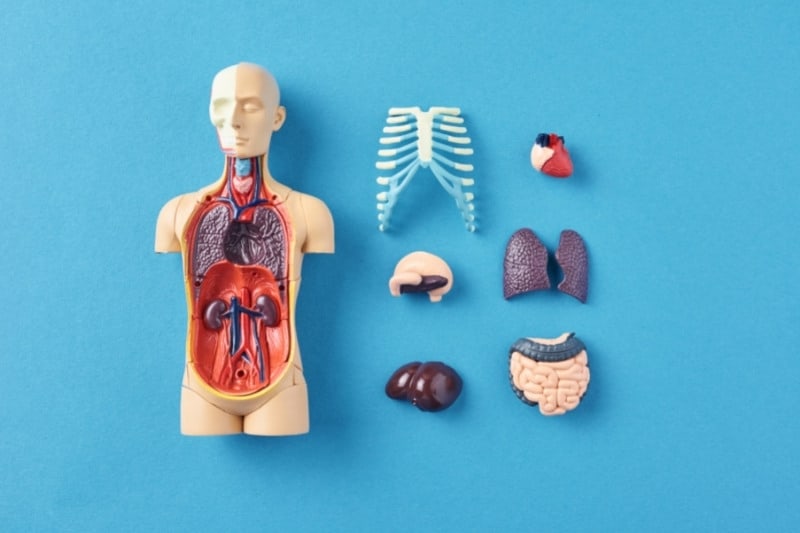
This course is another Udemy introductory class provided by Kenhub GmbH, a group of passionate individuals, scientists, and medical experts focusing on making anatomy easier.
However, compared to the previous course, this is more limited in scope and expectations. Its focus is on the following:
- Basic anatomy terms
- Planes and directions
- General structures
To cover the topics the course focuses on, it is divided into four sections:
- Anatomical directions and planes
- Anatomical structure types
- Tackling anatomy
- Further learning lessons
From what I have gleaned, this course best serves as a supplement to other introductory courses.
It doesn’t cover other technical lessons like the human body systems, and even the technical aspects it has are basic, such as the directions and planes.
However, it teaches you how to cope with the influx of information you get by pursuing anatomy, which other courses usually don’t. It also provides tips on how to memorize and study terms.
The above features make this course best if you take other introductory courses through your university or online.
3. Anatomy by Kathleen Alsup, Glenn M. Fox, and Kelli A. Sullivan

This online anatomy course is part of the XSeries program offered by the University of Michigan. Thus, its instructors are all members or lecturers of the university’s anatomical sciences division.
Like the first two courses, this one is also introductory. However, it’s more specific in that it focuses on the human body systems.
Nine body systems, from integumentary to endocrine, are tackled in this course. These body systems are further categorized into four sections.
If you want to build your knowledge of human body systems, this course is best because it specializes in that matter.
4. Anatomy Specialization by Kathleen Alsup, Glenn M. Fox, and Kelli Sullivan
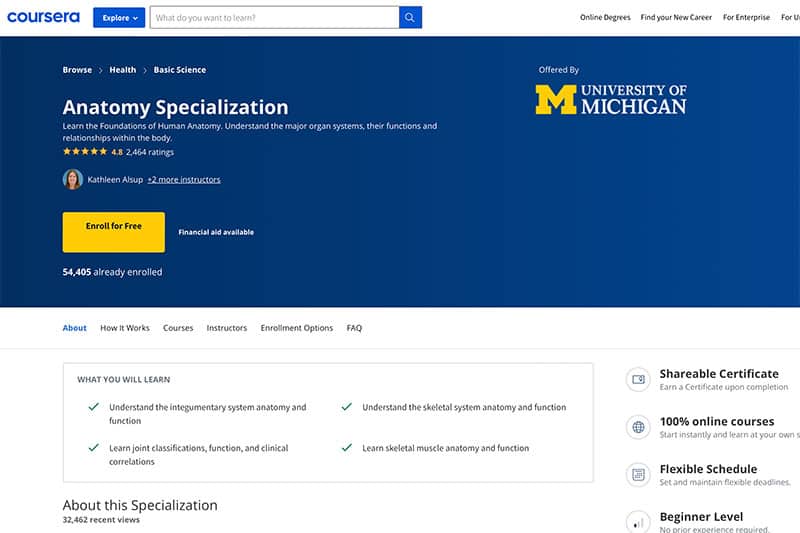
This course is almost the same as the previous one. However, it is conducted through Coursera.
Like the XSeries program, it is taught in four sections, and the number and specific types of body systems being covered are the same.
So how does this stand out from the previous one?
First off, Coursera includes subtitles in nine other languages besides English. These include French, Vietnamese, Spanish, and more.
This means that if English isn’t your first language and the subtitles are available in your language, it could help you out.
Besides that, XSeries has posted that the program is about to retire on its platform. Thus, if it is removed from their platform, you may still try and see if Coursera has it.
5. Anatomy: Musculoskeletal and Integumentary Systems by Kathleen Alsup
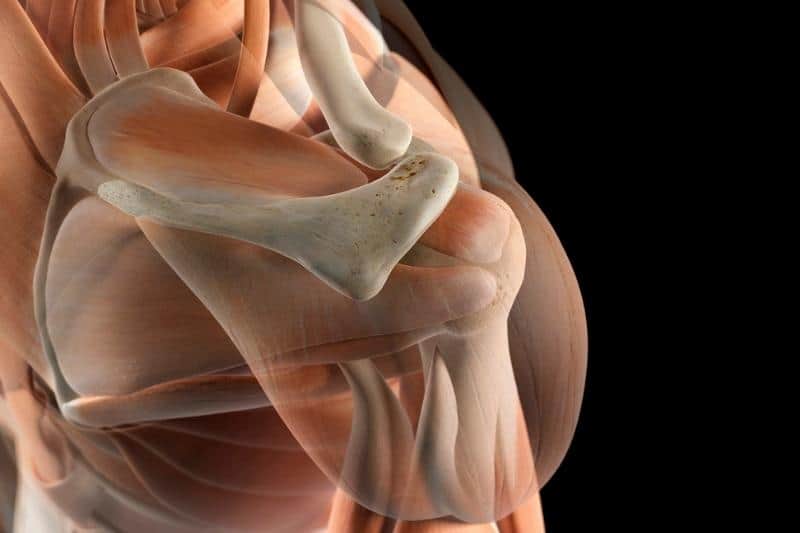
The instructor for this Coursera lesson is familiar because she handles the previous two courses. Kathleen Alsup is an anatomical sciences faculty member at the University of Michigan.
However, this one is more specialized, and also covers human body systems, but only three:
- Skeletal
- Muscular
- Integumentary
The course is divided into four sections:
- Skeletal
- Joints
- Musculoskeletal
- Integumentary
This course is worth it for science students who want to understand more about specific body systems.
So, if you’re about to take a challenging exam on the subject, and need more supplementary information, you might want to check it out.
6. Human Anatomy: Musculoskeletal Cases by Trudy Van Houten and Alexander George Bick
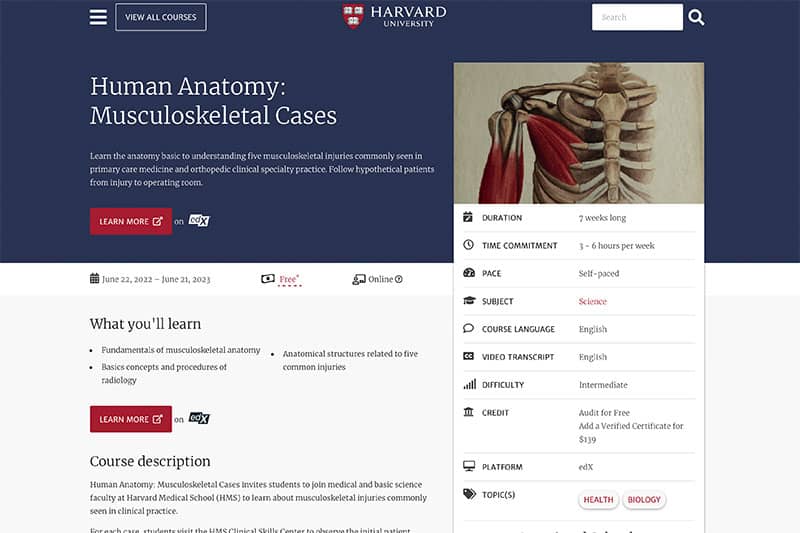
Harvard University provides online courses through the EdX platform. One such course is this one by Van Houten and Bick.
Trudy Van Houten teaches at Harvard Medical School and Boston University School of Medicine. Meanwhile, Alexander George Bick is a clinical fellow at Massachusetts General Hospital.
Like the course before this, this one is also specialized. Other topics covered are radiology concepts and anatomy related to common injuries.
You’ll participate in interactive anatomy, histology, and radiology lessons, and you can also access actual dissections from Harvard, radiology images, virtual operating rooms, and more.
Overall, this lesson provides excellent theoretical and practical skills and knowledge.
Still, you will need a foundational background in anatomy and related subjects to fully immerse yourself in and understand the lessons.
7. Anatomy & Physiology I & II by Carnegie Mellon University

The Open Learning Initiative from Carnegie Mellon includes this free and open anatomy course, which has no specific instructors.
This course stands out for explicitly including physiology in the curriculum. Although anatomy naturally touches on a bit of physiology, the subject is also incorporated in this program.
Thus, besides studying body systems, you’ll also learn in detail how they are integrated or work together. Leading up to that, you’ll also learn about:
- Body structure and function
- Central nervous system
- Homeostasis
- Respiratory system
- Circulatory system
- Digestive system
- Skeletal system
- Cardiovascular system
- Levels of organization (up to organ systems)
The course is quite in-depth, covering foundational topics like levels of organization. It also focuses on integrating anatomy and physiology.
The materials that are provided in these free online courses are also excellent, such as 3D images, which help you picture out and follow the lessons more carefully and comprehensively.
This is one of the best courses for those looking for a starter but detailed course in anatomy and physiology.
8. Anatomy Lecture & Lab by UNE Online

One of the many courses the University of New England (UNE) provides for health professions is this online anatomy lecture and laboratory.
There is no specified instructor, but you can check the Science Prerequisites Faculty & Staff roster, which handles the course.
Besides anatomical systems, organs, and structures, you also explore the 3D relationships of those concepts, and it also covers basic terms and nomenclature.
This course is also unique for discussing clinical and pathological applications, and it can help you to better understand how anatomy influences diseases, the reproductive system and clinical approaches.
However, this course isn’t for everyone. Not only is it quite technical and advanced, but it also has a prerequisite subject. There are also hands-on dissection activities, which require buying lab materials.
If you are a student or professional in the health sciences who needs in-depth knowledge and skills (or a filler course to complete your degree), this may be the best practical option.
9. Online Human Anatomy by Kenhub

If you think Kenhub sounds familiar, it is because one of the previous courses is taught by them.
Coursing through Kenhub, I can say that this one is more of a platform than a course. When you decide to open an account, you gain access to hundreds of lessons, not just in anatomy but also in histology.
You don’t really follow a curriculum, as you can choose which lessons you want to take. The anatomy lessons are tackled in body regions.
Overall, the emphasis is on flexibility, and you can start at any point, and at a pace that suits you.
The lessons are also available in various languages besides English. In addition, there is also a how-to-study section where you can obtain helpful study tips.
This course or platform is best if you want to explore anatomy rather than focus on an aspect of it.
10. Anatomy Courses Online by West Virginia University School of Medicine
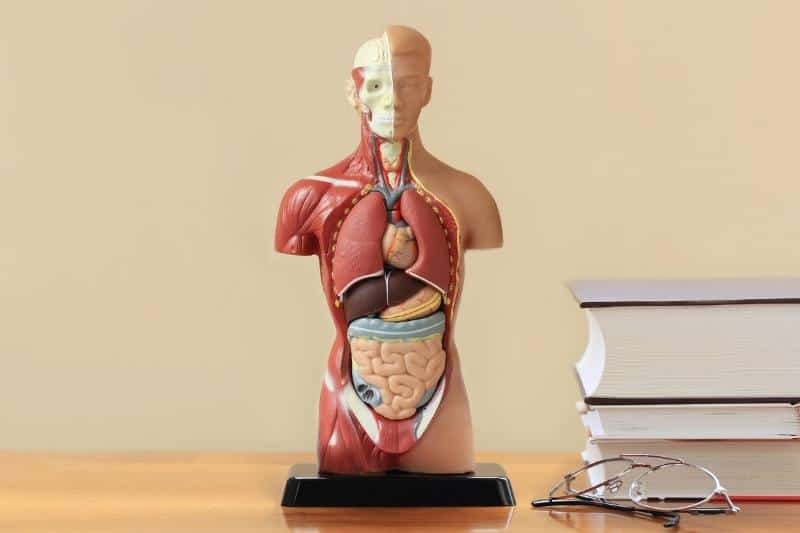
West Virginia University’s School of Medicine offers two introductory courses in anatomy – lecture and laboratory. There is no specific instructor for these courses, but the roster is always accessible.
These courses highlight gross anatomy or the structure of tissues and organs, and you will learn them by region (e.g., thorax, abdomen).
The laboratory course has dissection videos and interactive activities to fully explore the subject.
There are also prerequisites, which is undergraduate biology, which means that you cannot take this as an introductory course.
Moreover, you can only have the whole learning experience if you take both the lecture and lab courses.
These courses may be best for students needing to fill their credit hours and wanting to pursue a field where anatomy is critical.
11. Anatomy and Physiology 1 (A&P I) by Nicole Fauster
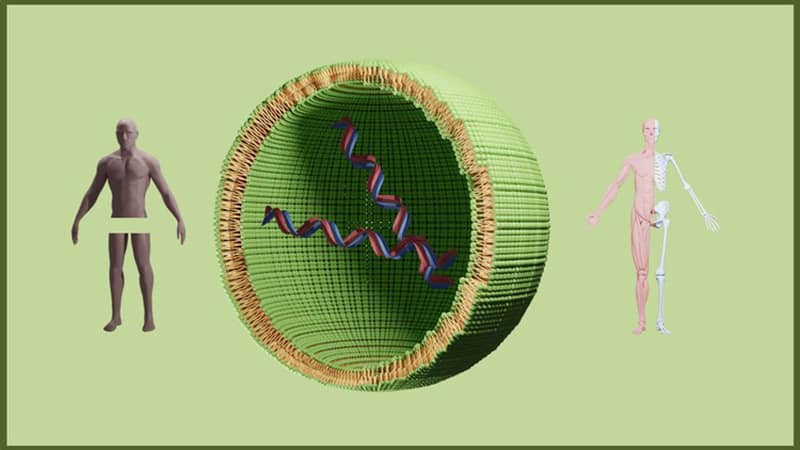
Nicole Fauster is a college biology instructor with a master’s degree in biology. This background is well-reflected in how the course is taught, which is more comprehensive but still related to anatomy.
Like the other courses, this one touches on anatomy basics, such as planes, directions, and terms.
Besides these, it also covers essential science topics, like:
- Chemistry
- Cells
- Mitosis and meiosis
- Central dogma
- lymphatic system
These topics are the foundation of most science courses, not just anatomy, and learning them can help you to better understand the lessons about tissues, organs, and body systems.
This course is indicated to have college-level introductory lessons, but even high school science students would benefit a lot from them. It covers more basic science background information than most other anatomy courses.
I would recommend this course for students who are still establishing the foundation of their biology and anatomy studies.
12. Anatomy & Physiology For Everyone: Bones and Muscles by Narain M.H.

This Udemy course is delivered by Narain, a biomedical science graduate and medical and life sciences instructor. Anatomy falls under the sciences Narain has been teaching.
For this course, there is no need for a background in anatomy basic knowledge or physiology. As an introductory course, it aims to expose you to the field and break down complex topics, making them easier to follow.
However, although it’s an introductory course, the lessons are specialized or limited to anatomy basics and skeletal and muscular systems. Thus, this is an excellent option if you want to learn more about these specific topics.
What’s unique about this course is how in-depth and detailed it discusses the body systems. It looks into micro and macro structures, different views of certain bones, and more.
You might feel some information overload, but it’s broken down into simple sections for easier understanding.
Recommended Anatomical Charts & Books
Entering the field of anatomy involves a lot of effort, and you need to read and memorize many new facts.
However, the key is to work smart and choose the best resources to make the most out of your efforts. Thus, I’m recommending two great books and study charts to make studying anatomy easier for you:
The Complete Human Body, 2nd Edition: The Definitive Visual Guide

Besides being available in multiple formats (Kindle, hardcover, paperback), what makes this textbook stand out are the detailed, 3D-generated illustrations of the human body.
The illustrations make it easier for you to picture the structures, how they function, and how they all work together for the body.
This makes it easier to retain information and pass your anatomy class.
It also discusses evolution, microscopic structures, physiology, and more. The detail in the topics and illustrations make this book an anatomy student’s best friend.
Anatomy & Physiology For Dummies

Studying anatomy can be overwhelming, especially when you’re just starting. There are many similar but distinct terms, complicated names, memorization, and more.
The key is to take it slowly. Start from the basics before rushing into the complicated concepts and words, and thankfully, this book helps you have a healthier studying pace.
It defines basic anatomy terms, introduces you to structures, and leads you to physiology. These are done so that even someone with little to no science background could follow.
Anatomy Charts (Quickstudy Academic)
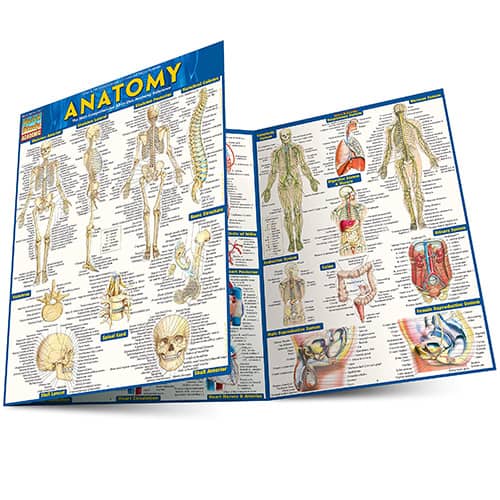
One of the best ways to memorize facts and terms is to have visual material. Making cards and illustrations from scratch is tedious, not to mention impractical, especially when these Quickstudy anatomy charts exist.
More than 1,400 terms and structures are included in these cards. You’ll find that this will be of great help, especially during exam seasons.
Frequently Asked Questions
Conclusion
Anatomy is challenging but crucial for many fields, especially the health and life sciences. High-quality courses and materials are of great help in making the lessons easier to understand. Several resources are available online.
Sources
- PubMed.gov: Herophilus of Alexandria (325-255 B. C.). The father of anatomy
- Wikipedia: Outline of human anatomy
- Medical News Today: Anatomy: A brief introduction
- Indeed: How To Become an Anatomist in 5 Steps
- Ken Hub: Homepage
GARG, Amit X., NORMAN, Geoff, et SPEROTABLE, Lawrence. How medical students learn spatial anatomy. The lancet, 2001, vol. 357, no 9253, p. 363-364.
TRIEPELS, Charlotte PR, SMEETS, Carlijn FA, NOTTEN, Kim JB, et al. Does three‐dimensional anatomy improve student understanding?. Clinical Anatomy, 2020, vol. 33, no 1, p. 25-33.
TABERNERO RICO, Roberto D., JUANES MÉNDEZ, Juan A., et PRATS GALINO, Alberto. New generation of three-dimensional tools to learn anatomy. Journal of medical systems, 2017, vol. 41, no 5, p. 1-5.
CHEUNG, Chun Chung, BRIDGES, Susan M., et TIPOE, George L. Why is anatomy difficult to learn? The implications for undergraduate medical curricula. Anatomical Sciences Education, 2021, vol. 14, no 6, p. 752-763.

